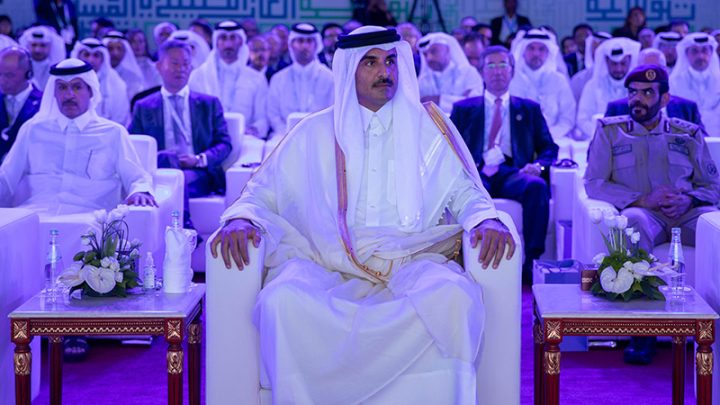The world’s largest LNG project is officially underway, with the ceremonial foundation stone laid by Qatar’s Amir Sheikh Tamim bin Hamad Al Thani on October 3.
Already one of the world’s largest LNG exporters, the North Field expansion will increase Qatar’s LNG production capacity from 77 million tonnes per year today to 126 million tonnes per year by 2026.
“This major expansion comes at a crucial time, as natural gas occupies a pivotal position in the energy mix in a world facing geopolitical turbulences and is in dire need of clean energy sources that are in line with the global environmental goals,” said Saad Sheirda Al-Kaabi, Qatar’s minister of energy and CEO of QatarEnergy.
LNG exports, which Qatar commenced in 1997, have helped elevate the country’s economy and society, says Racim Gribaa, president of Calgary-based Global LNG Consulting.
Gribaa has worked in energy for more than two decades, engaging with governments and industry in LNG developments around the world including Canada and Qatar.
“Qatar is a visionary nation that transcended poverty to prosperity through strategic planning and foresight. From humble beginnings in pearl fishing, it has emerged as one of the world’s wealthiest nations, a leader in LNG exports,” he says.
Canada is the world’s fifth largest natural gas producer but is not yet an LNG exporter.
LNG Canada will be the first export terminal, with capacity of 14 million tonnes per year. Construction is about 85 per cent complete and on track to start shipments by 2025, the project said in July. Construction of the smaller 2.1 million tonne per year Woodfibre LNG terminal is set to begin this fall.
These are promising steps demonstrating Canada’s potential, Gribaa says. But more can be done.
“By embracing Canadian LNG, we can play a crucial role in providing affordable, secure, and cleaner energy sources, thus benefiting nations while mitigating the adverse impacts of coal dependency,” he says.
Driven by expanding economies in Asia, world LNG trade has increased by more than 200 per cent since 2000, reaching 401 million tonnes in 2022, according to the International Gas Union.
Demand is expected to continue increasing, rising above 700 million tonnes in 2040, according to Shell’s latest industry outlook. This is due to population growth, expanding economies and the need to reduce reliance on coal-fired power.
Switching from coal to natural gas to generate power reduces emissions on average by about 50 per cent, according to the International Energy Agency. LNG from Canada can deliver an even bigger decrease, reducing emissions by up to 62 per cent, according to a June 2020 study published in the Journal for Cleaner Production.
Switching power generation to LNG can also significantly reduce particulate emissions, Gribaa notes.
“LNG is a fundamental part of the solution in achieving sustainable energy goals worldwide,” he says.
“There exists a considerable untapped potential for Canada (Montney, Duvernay, Horn River and Liard basins) to bolster its involvement and position itself as a key player in addressing the challenges posed by climate change and energy sustainability on a global scale.”
The unaltered reproduction of this content is free of charge with attribution to Canadian Energy Centre Ltd.
